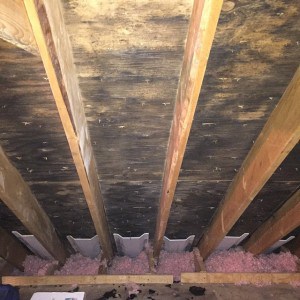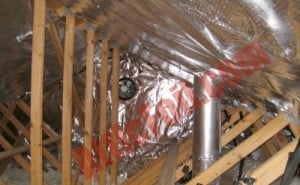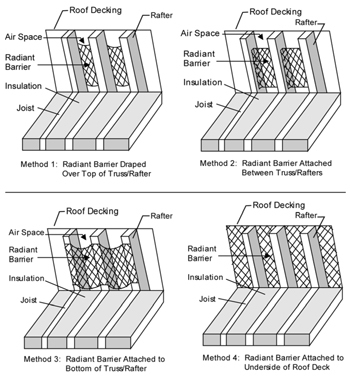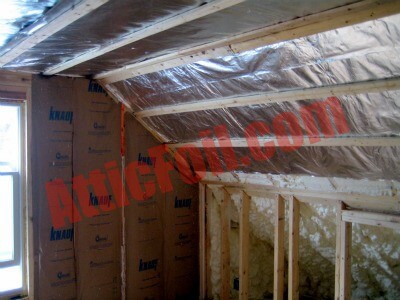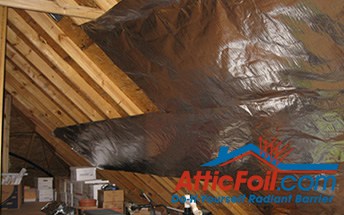I was looking at getting insulation blown in as well as potentially adding an attic fan gable mounted and then i saw some articles online about radiant barriers.
Radiant barrier vs insulation on gable side of attic.
Traditional attic insulation and radiant barrier work together and each do their part.
The roof design is a simple 8 12 pitch gable.
This is why you need both types of insulation.
A radiant barrier reduces the radiant heat transfer from the underside of the roof to the other surfaces in the attic.
Radiant barriers are utilized to reduce summer heat gain in attics and help to improve the efficiency of green building envelopes.
So the ac was leaking into the attic and the insulation is awful energy bills were high to boot.
We take a look at how radiant barriers work the different types of radiant barriers and some of the.
Radiantguard radiant barrier foil insulation installed in an attics can reduce attic temperatures by up to 30 degrees when stapled with a staple gun to the underside of roof rafters by reflecting up to 97 of the radiant heat that strikes its surface thereby reducing heat.
A radiant barrier can lower heat transfer from attics to the building below keep the attic space cooler and lower cooling costs by up to 17 in warmer climates.
When installing the radiant barrier do i still need to plug the vent holes closest to the fan.
Super r radiant barrier stapled underneath the rafters or laid on the attic floor over existing insulation will result in up to 50 percent energy savings in the summer according to the department of energy and up to 10 percent savings in the winter.
Radiant barrier installation attic radiant barrier installation most of the heat entering a home comes through the roof.
The insructions for the fan say to cover the vents closest to the fan so the fan can pull the air fron the other side of the attic.
By reducing the amount of radiant heat reaching the insulation in your attic the insulation remains cooler and is able to keep your home more comfortable.
A radiant barrier works best when it is perpendicular to the radiant energy striking it.
Radiant barrier is your first line of defense against radiant heat and traditional attic insulation fiberglass foam or cellulose is the second line of defense against conductive heat gain.
Unlike fiberglass cellulose and other traditional thermal insulation radiant barrier isn t installed on the attic floor instead it s installed in the attic ceiling just below the roof.
Here is an excellent video demonstration from youtube that clearly shows how a radiant barrier is intended to supplement your existing insulation.
This is because foil insulation reduces radiant heat gain rather than slowing conductive and convective heat flow.







